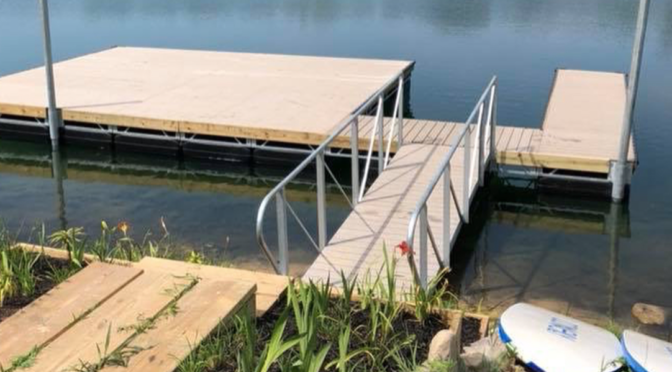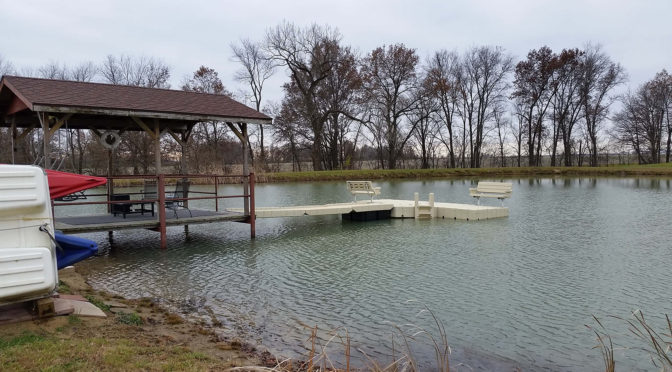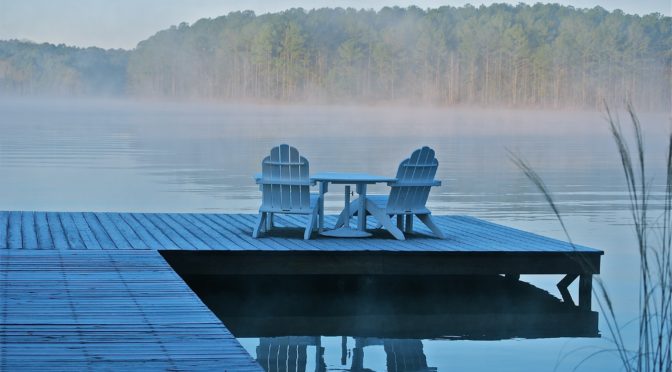A stable dock allows you to enjoy the water—whether you’re entering your watercraft or just hanging out by the waterfront. Yet these structures aren’t indestructible. Normal wear and tear might mean your stationary dock isn’t holding up like it used to. Is it time to upgrade your dock with repairs? Or do you need to spring for a total dock replacement?
The Difference Between Dock Types
Many dock owners have been satisfied with their stationary dock for years. But the newer dock options on the market might cause you to change your tune. Depending on your waterfront, a floating dock could be a better setup. Knowing the pros and cons of the two main dock types will help you make an informed decision.
Stationary Dock
Areas with high traffic tend to do well with stationary docks because these structures are less affected by watercraft activity and movement. Stationary docks also tend to work well for areas that tend to have a consistent water level. Plus, they can help give you a sturdy footing when you get in and out of your boat.
The problem with these systems, though, is that they can be difficult to repair. Issues with the pilings—especially in deep water—can be expensive to fix, and problems with warping or breaking are almost unavoidable. Dramatic shifts in the water tide can also make it tricky to enter the water or reach your watercraft safely.
Floating Dock
Swimming platforms and waterfronts with fluctuating water levels utilize floating docks because these systems can rise and fall with you water depth. This feature makes floating docks incredibly versatile for a variety of sites. Floating docks also tend to be more affordable to install and maintain.
On the flip side, a floating dock may not be your best option in areas with a lot of water traffic. Because these docks follow the ebb and flow of water, a busy area might make these types of systems uncomfortable for your needs.
Typical Stationary Dock Repairs
Being exposed to the elements can make it impossible for a stationary dock to last forever. Factors such as snow load and ice can wear down on your equipment. Then there’s the matter of sink holes or shifting earth. If you start to notice that your dock isn’t quite level, or that certain sections aren’t as stable as they used to be, it’s probably time to make some dock repairs.
Below the surface, your dock might be in need of piling replacements. Pilings are often the weak point of the structure, especially when ice and land shift come into play. Although repairs can be costly, they are necessary for a stationary dock. Ignore them, and you might be dealing with an incredibly unstable and unsafe dock—or even one that starts to slip under water!
Floating Dock Replacement Benefits
If you need a dock to support a boat lift, then you’ll have to stick with a stationary dock setup. But for other sites, a floating dock might be a better alternative. Unlike stationary docks, these structures adjust to where you boat is sitting in the water. That’s why it can be easier to enter and exit your boat from a floating dock, because these structures move with the water level. Some manufacturers even offer unique launch setups to make it even easier to enjoy your watercraft. EZ Dock products, for example, include low profile docks and canoe and kayak launches. These pieces can be great add-ons for a variety of dock layouts.
The other benefit of a floating dock is that it’s completely customizable. If you aren’t satisfied with your layout or need to expand, it’s relatively easy to make adjustments. Modular builds give you unlimited versatility with your design. Simply choose the pieces you’d like to add to your dock, install, and enjoy.
If you’d like a free estimate for a new boat dock, please contact our team at Deaton’s Waterfront Services. We’re always happy to collaborate on new designs. Let’s schedule a time to talk about your waterfront’s setup to find the dock that’s right for you!




